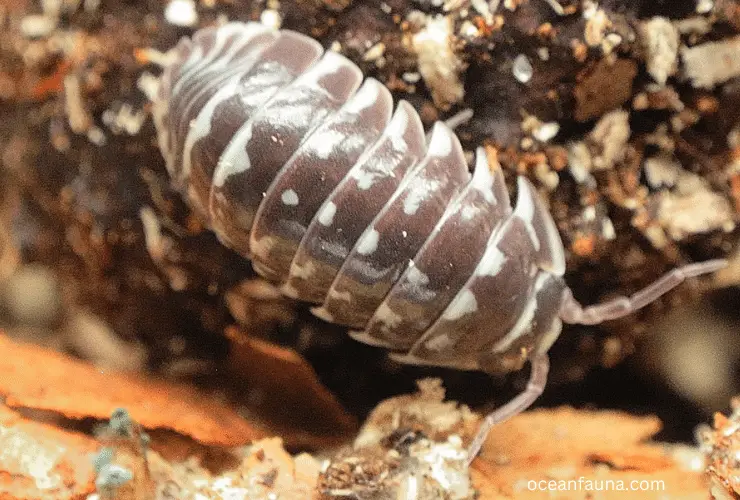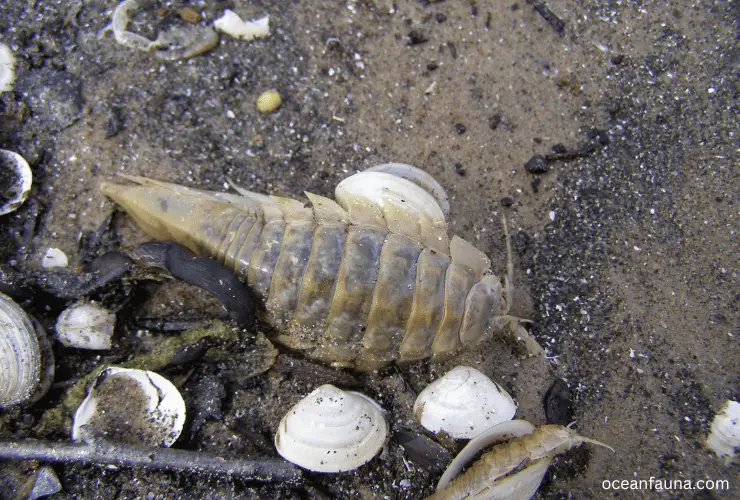Isopods are tiny little creatures that are found both on land and water. The land ones are called terrestrial isopods, and the ones that live on water are called marine or aquatic isopods. As they’re everywhere in our surroundings, people have become interested to know about their lifestyle and their reproduction process as well!
Isopods lay eggs. The male isopods give their sperm to the female isopods while they mate. The eggs of the baby isopods fertilise the pouch of their mother. The female isopods carry their eggs in their pouch until the eggs are ready to hatch!
Do isopods lay eggs or give birth? Well, if you’re one of those interested in knowing about the life cycle and reproduction process of isopods, you’ve arrived at the right place. Keep reading to explore interesting facts about the reproduction process of isopods!
Do Isopods Lay Eggs or Give Birth?
There are almost 10,000 species of isopods, including land and marine ones. Although they have differences in a few characteristics, one of the common things is their reproduction process.
However, the reproduction process of aquatic isopods differs to some extent. But generally speaking, they all go through the same process.
Isopods lay eggs. The baby isopods are hatched from the eggs once the eggs are fertilised. Isopods produce hundreds of eggs at a time. The eggs are white coloured mostly, and they’re small and round. Besides laying eggs, the female isopods also protect their eggs from predators and the environment. To protect the eggs, the female isopods use a special secretion. The eggs take around 3-4 weeks to hatch. And once they’re hatched, they look exactly like their parents.

One thing you might not know is that isopods have a breeding season.
Isopods prefer to lay eggs or produce offspring during the warmer season. Although the breeding season starts in spring, it’s not always followed. They always look for suitable warming temperatures for their breeding process.
During the breeding period or season, there is a change in the female isopods. The to-be mothers enter a receptive period. There they make a pair, and after that, they move on to mate with a male isopod.
How do Isopods Reproduce?
The reproduction process of isopods is quite unique and interesting.
Just like regular organisms or creatures, male and female isopods mate, and the male ones release their sperm into the pouch or reproductive organs of the females. But one interesting thing is that isopods have two penises and remain joined!
Female isopods have a swimming limb (pleopod) that is responsible for collecting sperm from the penis of the male isopods. Once the limb collects the sperm, it then puts it in the female’s gonopore.
Also See: Rubber Ducky Isopod: Size, Habitat, and Facts
Once the sperm is collected, it’s kept in a specific place inside the oviduct. This is a hump near the gonopore.
Once molting occurs, fertilisation occurs once the exoskeleton of the previous life stage sheds. And during this time, a link is created between sperm receptacles and the oviduct.
The female isopods carry the fertilised eggs in a special chamber called a marsupium. It’s located beneath the thorax cavity of a female isopod’s body. To keep the fertilised eggs safe, the cavity remains filled with water. This is the same for both terrestrial and marine isopods.
Once the eggs are fertilised, it takes around 3 to 4 weeks to hatch. The time frame is not fixed. Sometimes, it takes up to 50 days. After hatching, the eggs turn into mancae. This post-larval stage gives the babies the look of their parents. However, in this stage, the babies don’t have the last pair of pereopods.
Isopods lose or shed their exoskeleton in 2 phases. This process is called molting. This helps them to differentiate themselves from other species. In the case of the isopods, firstly, they lose their outer exoskeleton. And after that, they lose their front half.
Isopods themselves are tiny. So, when the eggs are laid, they aren’t seen by the naked eye at first. But as time passes, the eggs become visible in around 1-2 weeks. And with time, the eggs keep developing.
Reproduction Habitat for Pet Isopods
If you’ve isopods as pets or cultivate them for commercial use, it’s quite easy to make a habitat for the reproduction of your isopods.
Generally, isopods are kept in plastic or glass containers as they cannot climb plastic or glass.
To create a breeding habitat, you must fill up your plastic or glass container with soil and sand. You don’t need to fill it out fully. Rather, it needs to be half-filled. To prevent outside pollutants, you should use clean soil and sand. In case you don’t have soil or sand available near you, you can use coir fibre instead.

Alongside soil, sand, or coil fibre, you must also place tree bark and leaves on the container. But make sure to dry them in the oven at 200 degrees Fahrenheit for 5 to 10 minutes before placing them in the container.
Once done, make 2 or 3 layers using the dried bark and leaves. And after that, use a spray bottle to spray water over the bed, as isopods prefer a moist or damp environment to lay their eggs.
Keep this bed for a few days, and during the breeding period, you’ll notice that the tiny isopods have laid their eggs in the container.
FAQ
How Many Times Do Isopods Lay Eggs?
Ans: Isopods lay eggs twice or thrice a year. These are also called batches. At a time, each female isopod lays around 300 eggs. And the eggs take around 3-4 weeks or at max 50 days to hatch.
How Long Do Isopods Take to Mature?
Ans: It takes about a year for the baby isopods to reach maturity. And once they mature and become adults, they become ready to mate. In general, isopods have a lifespan of around 2 years.
How long are isopods pregnant?
Ans: Generally, the whole pregnancy period of isopods lasts around 40 to 50 days. This includes mating, egg fertilisation, and hatching. However, this time frame may differ slightly depending on the species.
What do isopod eggs look like?
Ans: The eggs of isopods are mostly white or pale coloured. The eggs are tiny and round. During the beginning stage, the eggs cannot be seen by the naked eye. However, as time goes on, the eggs become visible, and the babies start to develop inside the eggs until they’re hatched.
Conclusion
So that’s all about knowing about the reproduction process of isopods. The sole purpose of this guide was to enlighten you about the complex reproduction process simply. That’s why we tried to keep things informative yet simple at the same time.
So, do isopods lay eggs or give birth? Well, I hope you’ve now got your answer. Besides we’ve also provided a guide to setting the breeding habitat for pet isopods. So, you can also use this info for breeding pet isopods if you’ve any.
That’s all. Hope this guide was helpful to you. Do let us know whether it was helpful or not. Thank you!


4 thoughts on “Do Isopods Lay Eggs or Give Birth?”